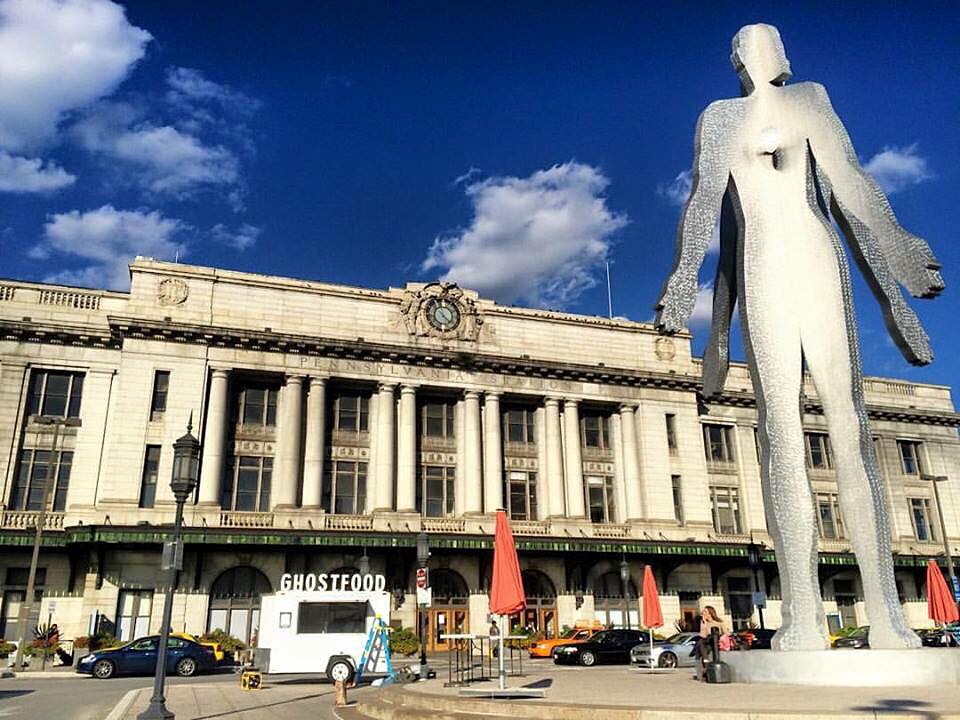
In front of Penn Station’s stone façade, with the setting sun as a backdrop, a line formed on Thursday at what appeared to be a white food truck.
But this vehicle lacked delicious aromas and the hustle and bustle of a clattering kitchen. Instead, servers in futuristic, white lab coats greeted customers, and asked which of three items they would like to try—cod, peanut butter, or chocolate milk. Then they handed over white, plastic trays and told visitors to head to a row of tables.
This isn’t a place to get a bite, but an opportunity to take part in a science-fiction-esque performance. This is GhostFood, the latest project from The Contemporary, a nomadic arts organization. Developed by New York artist Miriam Simun, it’s meant to examine the effect of climate change on biodiversity by showing how it could change what we eat.
The free performance, featuring students in the Program in Museums and Society at Johns Hopkins University, and the food truck—which appropriately has “GhostFood” in block letters across the top—will rove around the city during October and November. Additional stops are scheduled at Hopkins’ Homewood campus and Lexington Market.
When I stepped up to the table on Thursday, one of the students shared some background. Each of the products might disappear with the impact of climate change. She continued that the food items aren’t really what they seem—the cod and peanut butter are soy-based substitutes, and the milk contains no chocolate.
Then, she asked me to put a contraption resembling earphones around my ears, but let the top part dangle over my nose. When she told me to breathe in, a smell similar to chocolate filled my nostrils. “Keep breathing,” she told me, as I began to drink the milk.
When I finished, she told me that inside the nose piece was a tiny strip coated with a chemical compound. She asked me what I thought, and I told her that it had been an odd experience that made my senses feel detached.
But then a strange thing happened—the taste of a chocolate bar, one of my favorite treats, filled my mouth. “Maybe it’s your memory,” my guide said, and I realized she might be right.
Around me, others participants were carrying on conversations with their student guides. “It’s crazy to think of a world without these things in it,” one person said.
I had to admit I agreed. And as I walked home, I could still taste chocolate.
